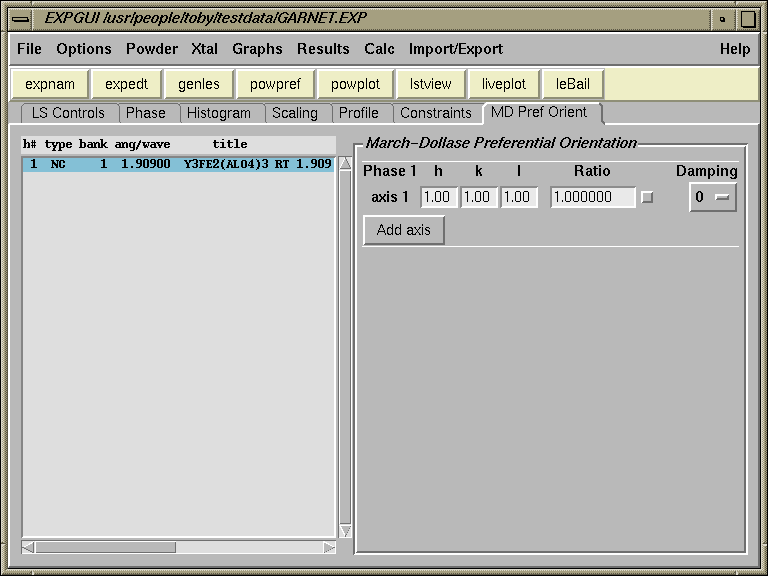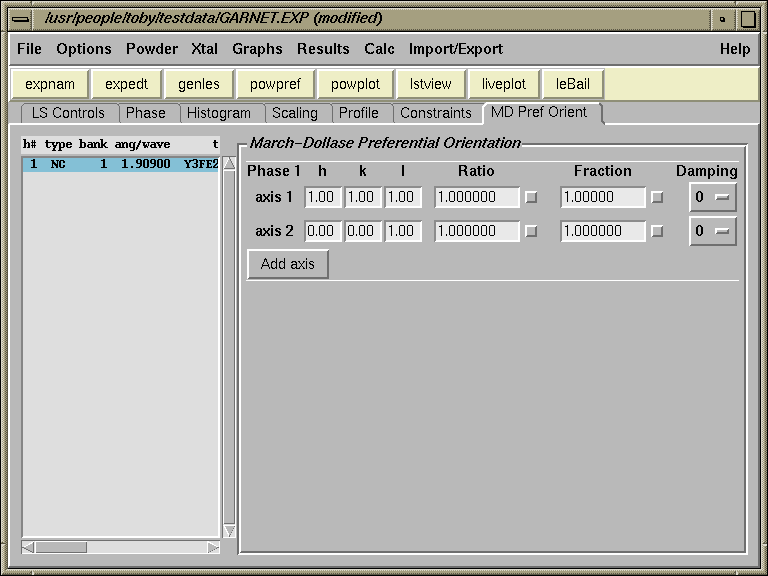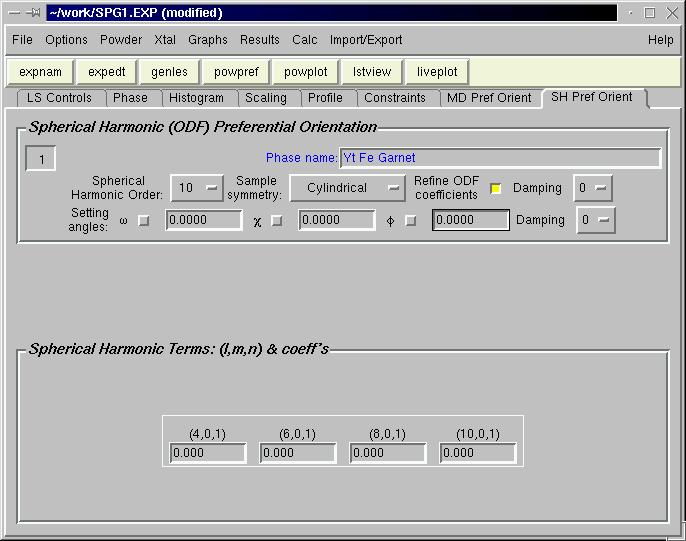EXPGUI, part 7
A.7 Preferential Orientation Panel
The Preferential Orientation Panel is used to control parameters related
to fitting parameters using the March-Dollase formulation
or the spherical harmonic formulation
for preferred orientation. Note that GSAS allows both sets of terms to be
used at the same time, but it seems unlikely that anyone would
actually want to try this.
A.7.a March-Dollase
In this model one or more axes are designated
as directions [designated by (hkl)] where crystallites are over
(Ratio > 1) or underrepresented (Ratio < 1).
The checkbox to the right of the Ratio value determines if it will
be refined.

If more than one axis is present, one must define the relative fraction
of preferred orientation for each direction. These fractions are normalized,
so do not vary the fractions for all directions in a phase.

If
"Multiple Histogram Selection" mode is set to any value other than
"Off", all terms are displayed for all selected histograms.
No attempt is made to group terms or flags.
A.7.b Spherical harmonic
The spherical harmonic formulation, also referred to as an "orientation
distribution function" defines a set of terms to treat preferential
orientation as a function of the sample symmetry and as a function of
the Laue phase symmetry of the phase and the selected order expansion.
Note that only one set of terms
is used for each phase, so this function should not be used when the
different types of powder data,
for example neutron and x-ray data, are used in a single refinement.
The setting angles define the orientation of the sample with respect to
the detectors and are typically used for texture analysis using TOF data
only.

When more than one phase is present, the phase is selected with the buttons
in the upper left. Note that
when additional terms are added by increasing the spherical harmonic order,
the new parameters default to zero. Thus, is the order is set to zero
and then reset to the previous non-zero value, all terms will be
reset to zero.
Also, as in EXPEDT, when the sample symmetry is changed, the
order is reset to zero.
Comments, corrections or questions: crystal@NIST.gov
Last modified 15-December-2005
$Revision: 1.11 $ $Date: 2005/12/16 00:42:32 $




